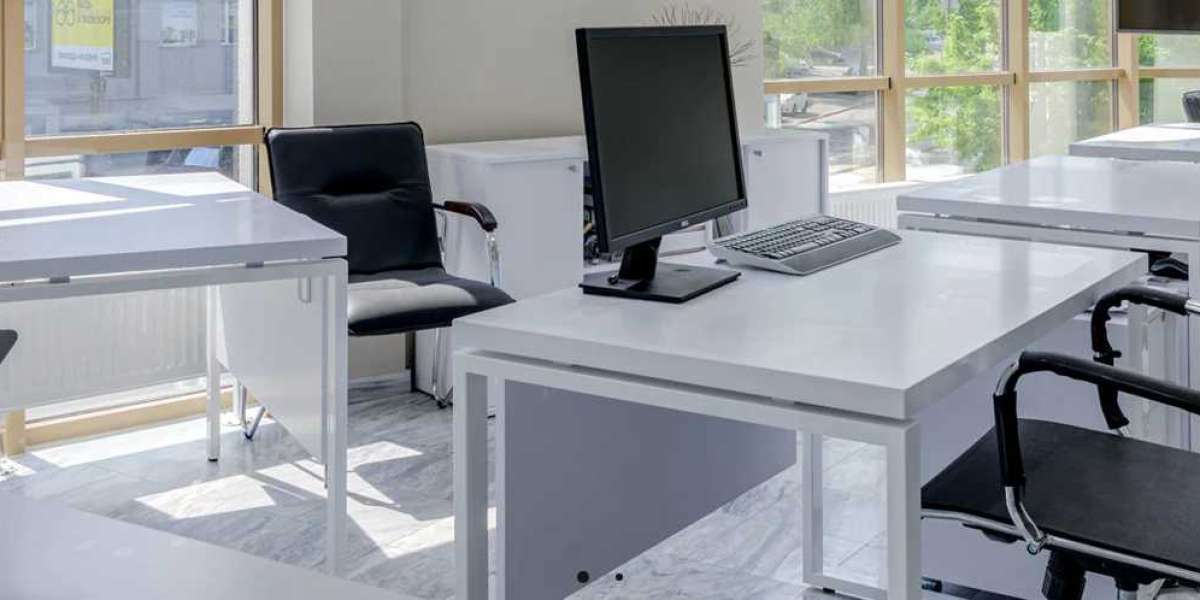Creating a customized workspace with DIY office tables allows you to tailor your environment to fit your specific needs, style preferences, and budget. Here are some creative DIY office table ideas that combine functionality with personal flair:
DIY Office Table Ideas
1. Reclaimed Wood Desk
- Materials Needed: Reclaimed wood planks, hairpin legs or metal brackets, sandpaper, wood stain or sealant.
- Instructions:
- Prepare the Wood: Sand down the reclaimed wood planks to remove any rough edges and apply a wood stain or sealant to protect and enhance the wood's natural beauty.
- Assemble the Tabletop: Arrange the planks side by side and secure them together using wood glue and metal brackets on the underside.
- Attach the Legs: Fix hairpin legs or metal brackets to each corner of the tabletop for a sturdy foundation.
- Benefits: Eco-friendly and cost-effective, this desk adds a rustic charm and unique character to your workspace.
2. Pipe Frame Industrial Desk
- Materials Needed: Wooden board for the tabletop, industrial pipes and fittings for the frame, pipe clamps, wood stain or paint.
- Instructions:
- Prepare the Top: Sand and stain or paint the wooden board to your desired finish.
- Assemble the Frame: Connect the industrial pipes and fittings to create a sturdy frame, using pipe clamps to secure them in place.
- Attach the Top: Secure the tabletop to the frame using screws or additional pipe clamps for stability.
- Benefits: The industrial look is modern and durable, with the added benefit of easy customization to fit different spaces.
3. Floating Wall-Mounted Desk
- Materials Needed: Plywood or solid wood board, L-brackets or shelf brackets, drill, wall anchors, wood stain or paint.
- Instructions:
- Prepare the Top: Sand and finish the wood board with stain or paint to your liking.
- Mount the Brackets: Install L-brackets or shelf brackets on the wall at the desired height, ensuring they are level and securely anchored.
- Attach the Desk: Place the wood board on top of the brackets and secure it with screws.
- Benefits: Saves floor space, ideal for small rooms or apartments, and creates a minimalist, modern look.
4. Sawhorse Desk
- Materials Needed: Solid wood or plywood board for the tabletop, two sawhorses, wood stain or paint, screws.
- Instructions:
- Prepare the Top: Sand and finish the wood board to match your decor.
- Set Up the Sawhorses: Position the sawhorses at each end of where the desk will be placed.
- Secure the Top: Lay the tabletop across the sawhorses and secure it with screws for stability.
- Benefits: Quick and easy assembly with a contemporary, open design that can be easily reconfigured.
5. Upcycled Door Desk
- Materials Needed: Old wooden door, glass sheet (optional), trestle legs or filing cabinets, sandpaper, paint or stain.
- Instructions:
- Prepare the Door: Remove hardware, sand the door, and apply paint or stain. Consider adding a glass sheet on top for a smooth writing surface.
- Choose the Base: Use trestle legs or filing cabinets for support, depending on your storage needs.
- Assemble: Position the door on the chosen base, ensuring it is level and secure.
- Benefits: Unique and creative use of materials, providing a large work surface with potential built-in storage.
6. Pallet Desk
- Materials Needed: Wooden pallets, sandpaper, wood stain or paint, screws, table legs or blocks.
- Instructions:
- Prepare the Pallets: Disassemble pallets as needed, sand, and finish with stain or paint.
- Construct the Desk: Arrange pallet planks into a tabletop and secure with screws.
- Attach Legs: Fix table legs or blocks to the underside for support.
- Benefits: Affordable and environmentally friendly, offering a rustic, personalized touch to any workspace.
7. Glass Top Desk with Storage
- Materials Needed: Glass sheet for the top, two small bookshelves or storage cubes, adhesive pads.
- Instructions:
- Prepare the Base: Position the bookshelves or storage cubes at each end of the desk area.
- Place the Glass: Lay the glass sheet on top, using adhesive pads to prevent slipping.
- Benefits: Offers a sleek, modern appearance with built-in storage, perfect for organizing office supplies.
Considerations for DIY Office Tables
1. Space and Layout
- Size: Ensure the table fits comfortably in your workspace and suits your ergonomic needs.
- Placement: Consider where the desk will be positioned, taking into account natural light and accessibility.
2. Material Selection
- Durability: Choose materials that are sturdy and long-lasting, especially if the desk will support heavy equipment.
- Aesthetics: Select finishes and materials that complement your existing decor and personal style.
3. Functionality
- Storage: Incorporate storage solutions like shelves, drawers, or integrated filing cabinets if needed.
- Cable Management: Plan for cable management solutions to keep your workspace tidy and organized.
4. Budget
- Cost-Effective Solutions: Opt for upcycled or reclaimed materials to reduce costs while adding unique character.
- Investment: Balance your budget with the quality and durability of materials to ensure a lasting solution.
Conclusion
DIY office tables offer a unique opportunity to customize your workspace according to your preferences and needs. Whether you prefer a rustic reclaimed wood design or a sleek, modern glass top, there are numerous ways to create a functional and stylish office table. By considering factors such as space, materials, and functionality, you can design a desk that not only enhances your productivity but also reflects your personal style.



